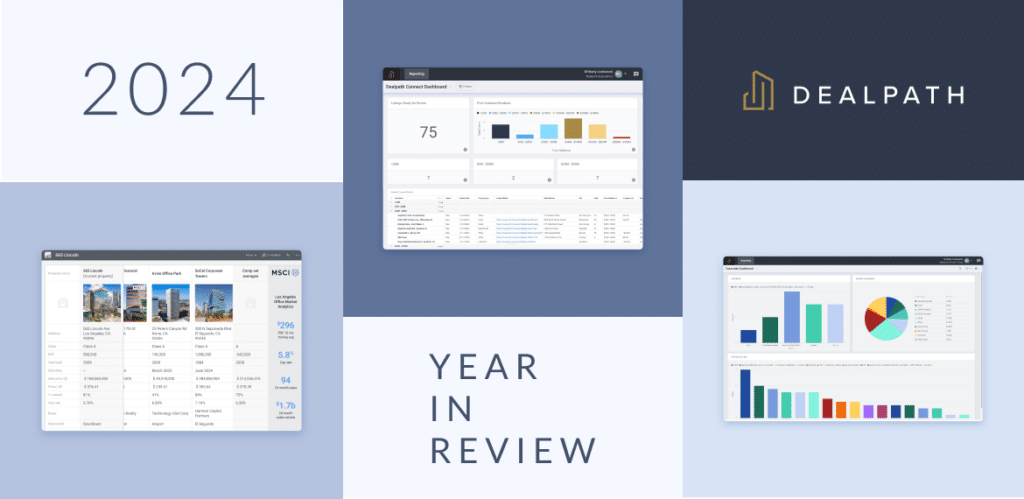Quickly and precisely appraising a property’s value early on in your deal evaluation is critical to keeping pacing in today’s market environment. The income approach to appraisal allows investors to calculate a property’s market value based on the income it’s currently generating. An informed understanding of a property’s current cash flow enables investors to more effectively determine if a deal aligns with their goals, strategy and criteria.
Read on to learn more about the income approach to appraisal, and how it fits into the broader evaluation process.
What is the Income Approach to Real Estate Appraisal?
The income approach to appraisal is one method that real estate investment teams follow to value new deals. Because it’s determined by the income a property generates, investors seeking to quantify current cash flow can understand immediate returns.
Income Approach Formula
To calculate a property’s value using the commercial real estate income approach, investors follow the formula below:
Net Operating Income/Capitalization Rate= Value
Depending on a number of factors, investors may choose to follow the income approach or other appraisal and valuation methods like:
- The cost approach, which determines value based on the costs of operating and upkeep
- The sales comparison approach, which relies on values from sales comps in the same market and asset class
- The price per square foot method, which values the property through the lens of total space available
To arrive at the most accurate valuation, consider carefully how each expense or income stream may increase or decrease over time. Adjusting these line items accordingly is key to accuracy. Additionally, be sure to include annual, recurring expenses related to property management, but not one-off expenses. While these line items may affect your bottom line, they won’t necessarily influence the market valuation.
When Do Investors Follow The Income Approach Method?
In many scenarios, the income capitalization approach’s emphasis on revenue makes it a direct appraisal method for valuing real estate. It’s not, however, the best option in every situation. First, it’s not applicable for owner-occupied properties, which do not generate revenue streams. Instead, the income approach is most relevant for buildings owned by landlords with the goal of generating profits. It’s also more relevant during the early stages of your evaluation.
The income approach to appraisal encompasses both the direct capitalization method and the yield capitalization method. While both methods follow the philosophy that income determines value, the direct capitalization method considers the current cash flow value, while the yield capitalization method factors in year-over-year rent growth and cost fluctuations.
The Direct Capitalization Method for Income Approach Appraisal
The direct capitalization method determines a property’s value based on income in a 1 year timespan. It assumes that both costs and income will remain the same from year to year.
Because of this assumption, the direct capitalization method is most suitable for properties generating consistent income from year to year. As you continue to compare properties using the direct capitalization method, be sure to remain consistent with assumptions factored into the NOI calculation.
The direct capitalization method formula is straightforward. First, calculate the net operating income based on a pro forma model. Then, find the cap rate for the appropriate market and asset class. Finally, divide the net operating income by the cap rate.
The result of this calculation is the property’s value based on the direct capitalization method.
The Yield Capitalization Method
The yield capitalization method of the income approach to appraisal factors in different considerations and goals. Instead of calculating the property’s value based on one year of income, the yield capitalization method–similar to a discounted cash flow analysis–acknowledges that many investors purchase real estate with the philosophy of long-term gains in a volatile, ever-changing market.
For this reason, it factors in year-to-year fluctuations in costs, like maintenance and development, as well as vacancy rates and rent. Ultimately, investors strive to determine the projected returns at the time of purchase by including these considerations. As a result, the yield capitalization method is the preferred income approach for volatile investments with a higher potential for fluctuations.
To calculate the net operating income, start with the pro forma cash flow statement. Be sure to factor in assumptions about vacancies, operating costs, the predicted holding period, and other variables that could influence the net operating income. Then, take the net operating income figure for the final year of the pro forma, or the holding period.
Next, find the terminal cap rate based on market comparables, projected for the end of the holding period. Finally, divide the NOI in the final year of the holding period by the cap rate to find the property’s value based on the yield capitalization method.
Income Approach to Appraisal Example
Let’s take a look at one example of the income approach formula, using the direct capitalization method. For the sake of this income capitalization example, assume the property generates stable cash flow with the following values:
- Revenue: $300,000
- Operating costs: $75,000
- Market cap rate: 5.5%
To find the net operating income, first subtract the operating costs from the revenue:
$300,000-$75,000=$225,000
Based on this information, the net operating income is $225,000.
Then, convert the market standard cap rate for similar properties of 5.5% to a decimal: 0.055.
Finally, divide the net operating income by the cap rate:
$225,000/0.055= $4,090,909
Based on this direct capitalization example, the property’s value is $4.09 million.
Instead of factoring in value for each of these figures, the yield capitalization approach would call for multiple years of this data. Consequently, the resulting appraisal value would theoretically be more closely aligned to market volatility or cyclicality.
Factors to Remember When Using the Income Approach
Should you rely on the income approach, the cost approach or the sales comparison method? Each method to valuing real estate comes with its own set of assumptions and potential oversights. Different investment strategies call for unique approaches, so the ideal approach varies depending on your preferences, goals and other property-specific factors. Most investment teams look to multiple figures to gain a broader perspective of the property’s value throughout an evaluation.
These are some of the most important considerations to keep in mind:
- As mentioned above, the income approach is not suitable for owner-occupied buildings, given that it predicts value based on revenue
- Calculating the net operating income can be challenging if there is uncertainty around operating expenses
- The property may have specific defects, vacancies or other conditions that should be represented in the calculation
- While surfacing sales comps to inform cap rate predictions can be challenging, relying on a reportable deals database in real estate investment software streamlines this process
Surfacing the Most Profitable Opportunities
As you source, manage and execute deals in your pipeline, acting on opportunities early is vital, yet challenging. Deal management software has empowered teams of all sizes to make data a competitive advantage in surfacing the most profitable opportunities.
Download our e-book to learn more about why leading investment management firms are leveraging deal management software to make data a competitive advantage.
Download E-Book


